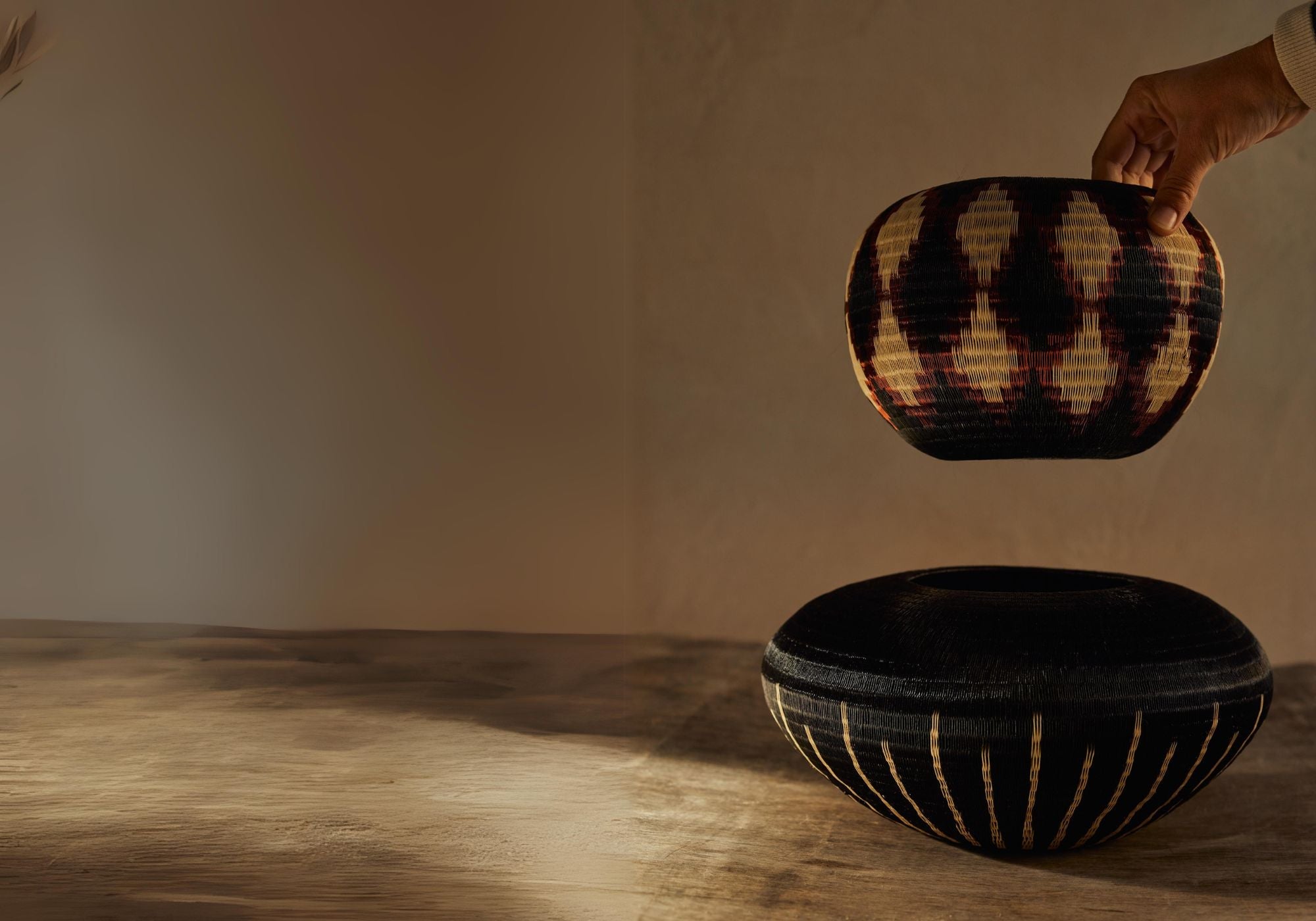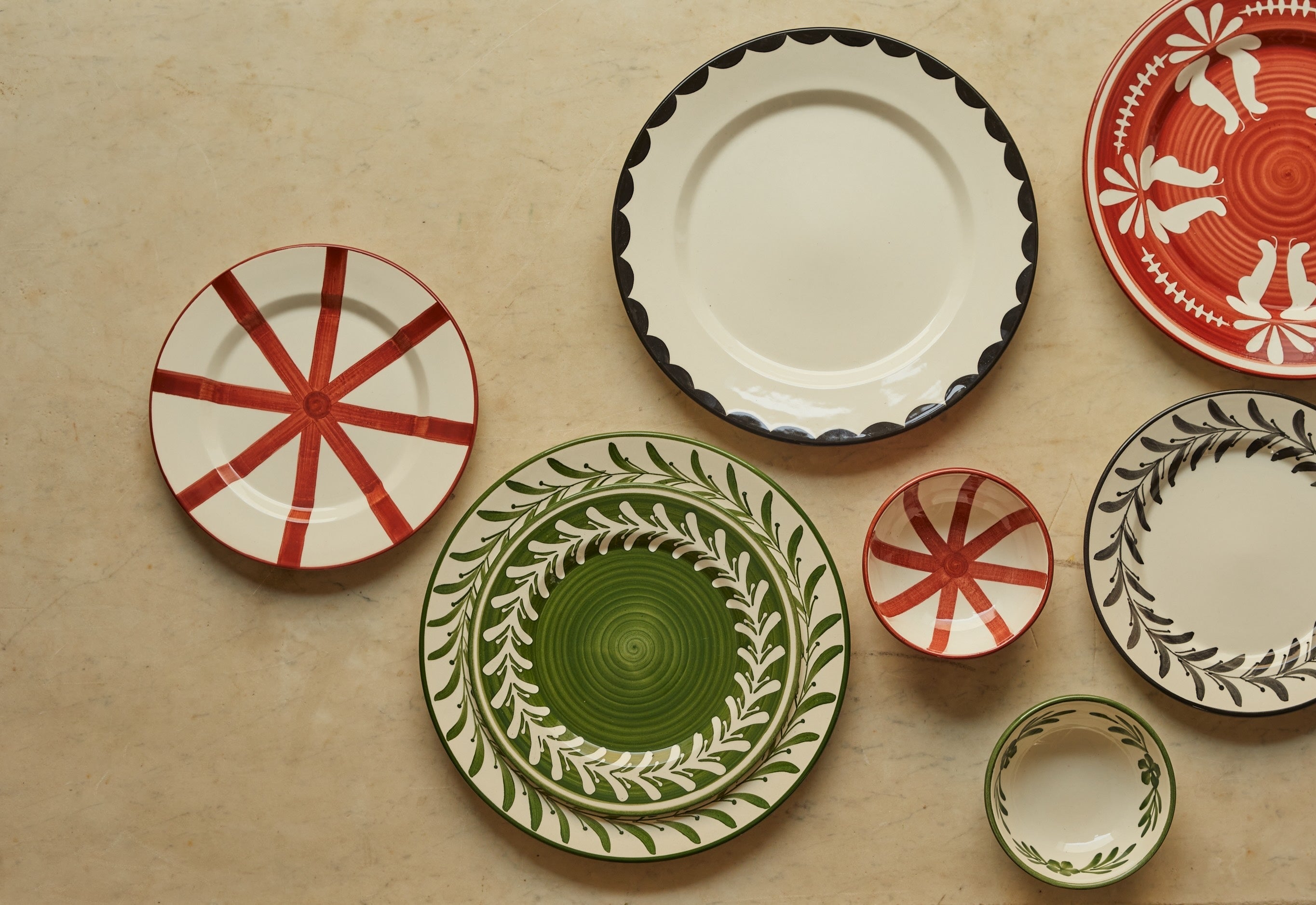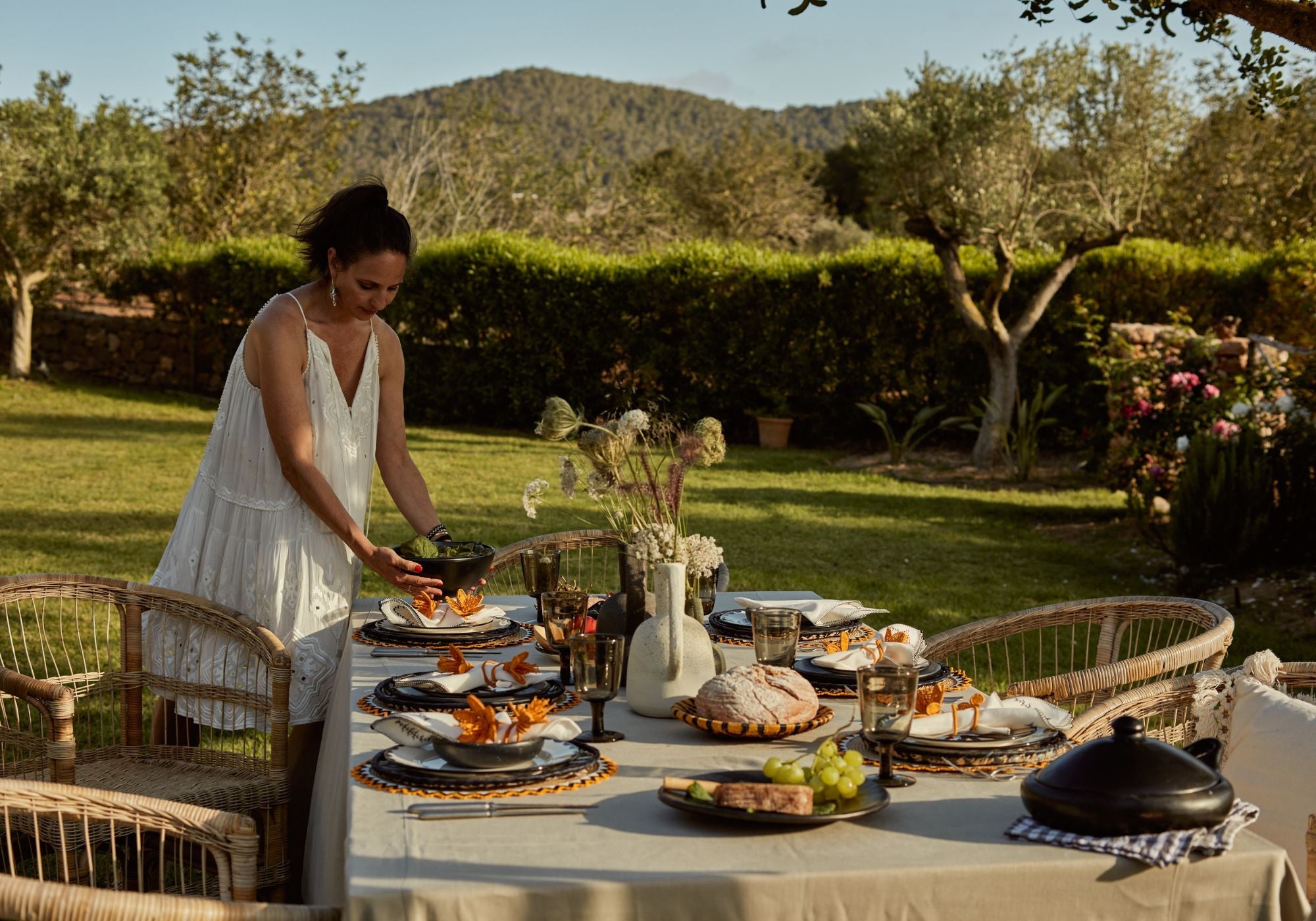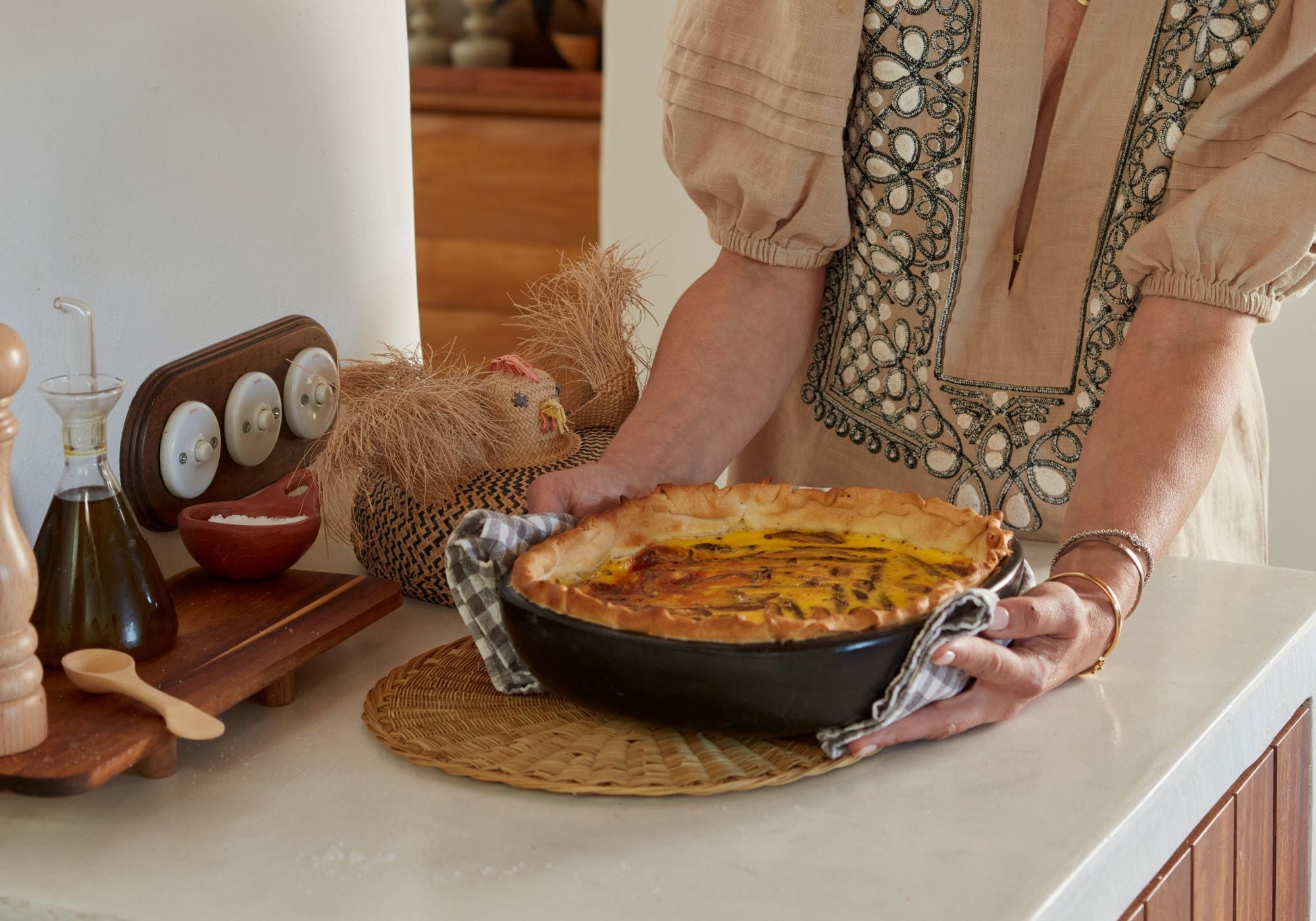
How to start a Werregue Collection?

COLLECTING WERREGUE
Collecting Werregue pieces is an art form which demands a keen eye and a deep appreciation for the intricate craftsmanship involved. When seeking an authentic Werregue masterpiece, it's vital to procure from reputable sources directly connected to the indigenous communities.
At CasaLatina, we engage directly with the indigenous communities, carefully curating traditional Werregue pieces and developing innovative products using this time-honoured technique. Learn more the art of Werregue and our collaboration with the Wounaan artisans.
Behind each Werregue collection lies a profound understanding of the diverse shapes and weaves, each design rooted in the cultural beliefs of the indigenous communities who excel in this craft.
Werregue Shapes
Werregue art comes in a myriad of shapes and sizes from Vases to Trays and Bowls the options are abundant. Here, we highlight some of the most traditional forms commonly encountered.
BOLA
A circular or rounded vessel with a symmetrical shape that closely resembles a sphere. This design is characterized by its smooth, curved surface that creates a harmonious and balanced appearance.

URNA
Features a tapered base that widens towards the top, creating a rounded or oval body with a narrow neck and flared rim, reminiscent of classical urns used for storing ashes or ceremonial purposes.

TINAJA
Charachterised by its rounded, bulbous body with a wide base and a short neck. Inspired by traditional pottery vessels used for storing liquids or grains, this vase design often reflects a rustic and earthy aesthetic.

TROMPO
These vessels are shaped like a top, also called "trompo" vases, are wider than they are tall, with a unique silhouette that resembles a sphere that has been slightly flattened. The tapered body of the vase begins with a wider top opening, which narrows down towards the bottom like an inverted cone.

PLATON
These werregue platters or trays can be oval or round, they are entirely made of Werregue and are typically made to be displayed as wall hangings.

FRUTERO
With a centre in wood and a slightly conical rim made out of Werregue these plates are intended to be used a fruit bowl or centre piece. They can in an oval or round shape.

Werregue Weaves
Creating a Werregue piece involves a meticulous and intricate process that showcases the dedication and artistry of the artisans. The first step is to harvest and dry the Werregue palm, after which the toughest stalk is transformed into fibres. These fibres are then carefully woven together, combining the stronger fibres from the stalk with the finer ones from the leaves.
Using fine palm threads, artisans skilfully bind each circle, known as the "belly button," to the next, creating a beautiful coil structure. This process requires precision and attention to detail as the artisans change colours and craft intricate designs throughout the piece. Depending on the size of the artwork, this communal undertaking can take weeks, months, or even years to complete.
The pattern in which each circle is bound to the next forms the weave of the Werregue piece. There are three main types of weaves: basket weave, closed weave, and open weave. Each weave style imparts a unique texture and visual effect to the final piece, further showcasing the versatility and creativity of this traditional craft.
CLOSED WEAVE
The most refined and laborious werregue weave is created by tightly binding the coil, ensuring that there are no gaps between each stitch.

BASKET WEAVE
The least laborious of the three werregue weaves, the basket weave is achieved by binding three coils (rather than two) in each stitch, resulting in a visual effect that resembles a traditional woven basket.

OPEN WEAVE
To achieve an open weave, gaps are intentionally left between each stitch, allowing the structural coil to be visible. This technique is typically used for lower-value items, as the weaving process requires less time and labour compared to the Closed Weave.

FACTORS IMPACTING THE PRICE OF WERREGUE
Werregue art pieces can range between a few hundred pounds for small pieces to thousands, or even tens of thousands, for larger and more elaborate pieces. Each Werregue piece bears the mark of its maker, as the Wounaan believe that the artisan's feelings are reflected in the weave, creating a unique piece that can never be exactly replicated. Additionally, as mentioned before, it can take months or even years of dedicated work to elaborate a piece of Werregue.
The main factors influencing the price of a piece are as follows:
- Size - The larger the piece, the higher the price.
- Structural coil - The best examples of this fine craft are made using thinner structural coils, resulting in a tighter and more refined finished product.
- Weave style - Pieces elaborated using the closed weave are pricier, as the weave itself is more laborious.
- Design - More intricate designs require a higher level of skill and thus increase the price.
- Materials - In recent years, Werregue weavers have introduced the use of metallic materials into their craft, creating pieces with a unique contemporary twist. The use of these materials increases the price of a piece.
DISPLAYING FOR YOUR WERREGUE COLLECTION
Werregue pieces have become a coveted addition to interior design, adding a touch of exotic and natural beauty to living spaces. Their intricate patterns and earthy tones seamlessly complement various design styles, from contemporary to bohemian chic.
These handwoven masterpieces can serve as stunning centerpieces, whether displayed on a coffee table, a console, or a mantelpiece. Their organic forms and textures introduce a grounding presence, creating a harmonious balance with sleek, modern furnishings.
In bohemian-inspired interiors, Werregue vases and baskets effortlessly blend with vibrant textiles, natural fibres, and eclectic decor elements, evoking a sense of wanderlust and global influences.
For those drawn to minimalist aesthetics, a single Werregue piece can become a focal point, its intricate details and earthy hues providing a subtle yet captivating contrast against clean lines and muted tones.

CARING FOR WERREGUE
Whether displayed as an art work, in a vignette or used a s planter or centre pieces - following these simple caring instruction will ensure you Werregue remains beautiful for years to come:
- Ensure that the piece is not exposed to direct sunlight for prolonged periods of time
- If used as plater ensure that there is a water plate in the bowl so that the piece is not in direct contact with water
- Clean regularly with a damp non abrasive cloth.
OWNING A MASTER PIECE
Acquiring a Werregue masterpiece is an investment in a cherished work of art that transcends mere decoration. Each piece is a unique and ornate masterpiece, meticulously handwoven with patterns and designs inspired by the natural world. Owning a Werregue artwork connects you to ancient traditions and the vibrant indigenous communities that have safeguarded this exceptional art form for centuries.
Beyond cultural significance, a Werregue piece adds timeless beauty and exotic energy to any living space. Its tactile, textured weave and intricate patterns entice closer inspection, unveiling new layers of artistry with each glance.
In conclusion, building a Werregue collection allows you to appreciate the enduring artistry and cultural significance of the Wounaan indigenous communities. These captivating masterpieces hold profound value as symbols of heritage and showcase the intricate craftsmanship that makes Werregue art a true treasure.
More Posts

Creating the perfect plate wall
Learn how to achieve a stylish plate wall decor that feels unique. Bring warmth, personality, and artisan craftsmanship into your home with CasaLatina.
Read more
Getting ready for summer hosting
Summer at CasaLatina is all about meaningful moments with loved ones. In this post, Sharon shares her top tips for effortless summer hosting — from prepping linens and tech checks to creating beaut...
Read more
Alice Water's Inspired Summer Qiche
A silky, custard-style quiche inspired by a memorable meal at Chez Panisse. Made with grilled asparagus, oyster mushrooms, and baked in a Chamba gratin dish
Read more